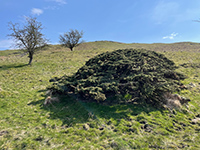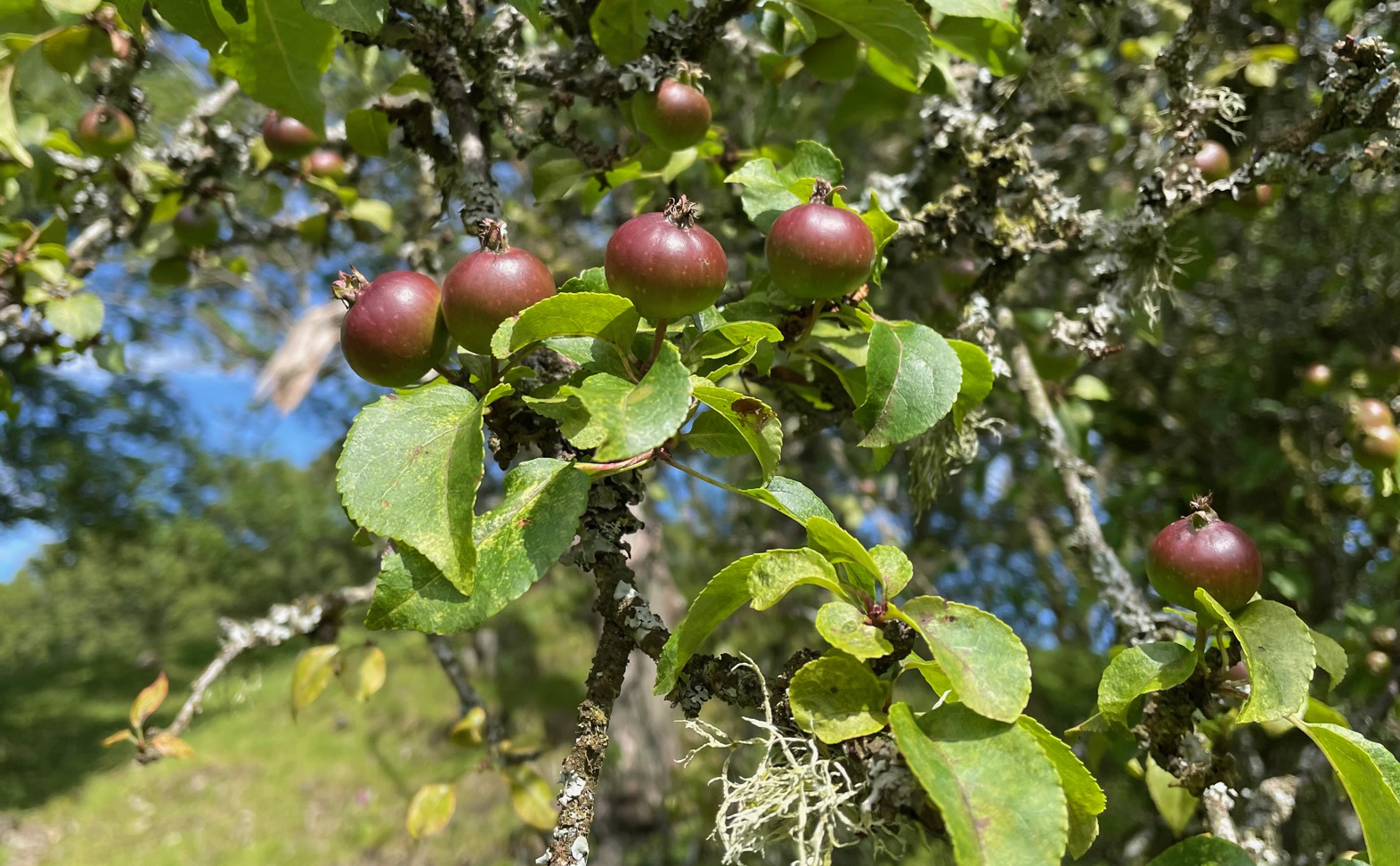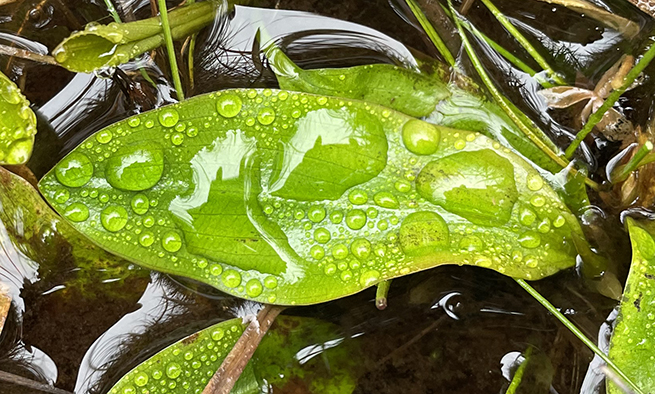School Knott and its neighbouring fell, Grandsire, is a part of Matson Ground Organic Farm which is important for both walkers and wildlife. School Knott tarn is one of the few remaining sites in the UK to support medicinal leeches, while grassland species include bird’s foot trefoil, selfheal, devil’s bit scabious, and bilberry. It is also home to ancient trees, some of which date back to when the land was known as ‘Applethwaite Common’ and may pre-date the land being enclosed.

To support existing flora and fauna, and to encourage more rare and important species, we are beginning a habitat creation project on School Knott and Grandsire, and in some adjoining fields, under a new DEFRA Stewardship agreement. This will involve the establishment of wood pasture and will extend areas of mire and wet grassland habitat. We also intend to open the culvert between School Knott Tarn and Scout Beck.

Why Wood Pasture?
Wood pasture is a diverse landscape characterised by areas of native trees, thorny shrubs and open areas where animals graze. It allows trees to grow with an open canopy, offering more habitat to flowering plants and the insects which depend on them, and higher level of carbon capture compared to woodland.
Wood pasture is likely to have been the most widespread habitat in the UK before human influence altered the landscape. It is also a culturally important part of our countryside, and a historic working landscape which has been maintained by humans over centuries, including in many parts of Cumbria.
Biodiversity
Wood pasture is one of Britain’s richest, most biodiverse habitats. Low numbers of cattle grazing in wood pasture allows native shrubs and trees to naturally regenerate in the areas that the cattle find it difficult to reach, and this kick starts wider regeneration and leads to a broader range of species.

Carbon Capture
Wood pasture also has benefits for carbon sequestration. As trees have more space to grow, they gain girth faster than trees in closed canopy woodland, and capture about twice as much carbon per hectare. They also capture a lot more than open grazed pasture. Wood pasture can therefore form a ‘carbon sink’, and be an important natural climate solution.
Slowing water flow
Wood pasture also slows the rate that rainwater enters soil, streams, rivers and lakes, and therefore reduces the risk of downstream floods.
What to expect on School Knott and Grandsire
Planting
We plan to plant around 4,000 native trees over School Knott, Grandsire and adjoining fields.
Planting has been carefully planned to ensure that existing habitat will not be negatively affected, and existing ‘Old Mature’ and ‘Ancient’ trees will be protected by not planting young trees too close.
Tree species have been specially selected to suit soil type and topography. These will include alder, common juniper, holly, hazel, rowan, oak, Scots pine, small leaved lime, blackthorn, crab apple, wych elm and wild cherry. Many of these native trees will provide pollen for birds and insects.
Tree protection
To protect growing trees from deer and cattle, and allow a larger number to develop, we will use a selection of different types of fencing around certain areas of the fell. Some fenced exclosures will contain up to 200 trees. Where these fences cross well-used paths there will be gates to allow continued access. See maps
Other trees will be planted in tree cages containing around 5-10 trees. These will usually be a larger tree, such as oak, with several hawthorn or blackthorn trees. The rest of the trees will be planted in individual mesh guards, allowing each tree to grow with a full wide canopy.
Water management
Small drain blocks will be used to create small wetland and mire areas. These will benefit dragonflies and other insects, and the plants they feed on.


Wet grasslands will also be encouraged. These support plants such as devil’s bit scabious, primroses and marsh violets which provide nectar for key species of butterfly and we will be planting more of these species.
The culvert connecting School Knott Tarn and Scout Beck will be opened up into a stream, providing extra water habitat and reducing flooding on the footpath.
Organic farming
Native breed cattle, which are particularly suited to this type of pasture, will graze the whole area. The number of cattle and their grazing areas will be carefully managed to allow effective regeneration, and sheep will no longer be grazed on this area.
Like the rest of Matson Ground Farm, land is managed organically under our certification with Organic Farmers and Growers. Most importantly, this means there will be no application of fertiliser and no use of pesticides.
What will the results be?
We hope that this work will result in a highly diverse landscape, restored and enhanced for both nature and people.
In addition to the planted trees, we expect to see naturally occuring regeneration of trees as well as improved grass cover, providing habitat for key species of birds and invertebrates, some of which are becoming increasingly uncommon. In total the combined tree canopy should reach 20% of the whole area, much less than woodland.
Areas of mire will also increase. Existing mires contain rare flora such as sphagnum moss, wild cranberry, devil’s bit scabious, heath-spotted orchids and star sedge.
These developments will complement other, similar habitats on connecting land. This will increase the total network of habitat for key threatened species, which is far more effective at supporting larger populations than a fragmented landscape.
With the development of trees and shrubs there will be an increase in carbon capture and in rainwater retention, reducing run-off during periods of high rainfall and therefore reducing the risk of flooding further downstream.
We are looking for volunteers to help with tree planting and supporting the regeneration of this landscape.
To find out more, or if you have any questions about this project, please get in touch.
Keep an eye on our Instagram and Facebook pages for updates and more information.
Our project was featured on the Treeamble podcast - listen here.
Expert advice and support
The wood pasture planting plan has been developed by Treescapes Consultancy. Butterfly Conservation have contributed to the wood pasture design and the plans to support the conservation of important invertebrate species. We are grateful for the advice and support of Natural England in the development of the scheme. The project is funded by Natural England through a Higher Level Stewardship Scheme agreement.